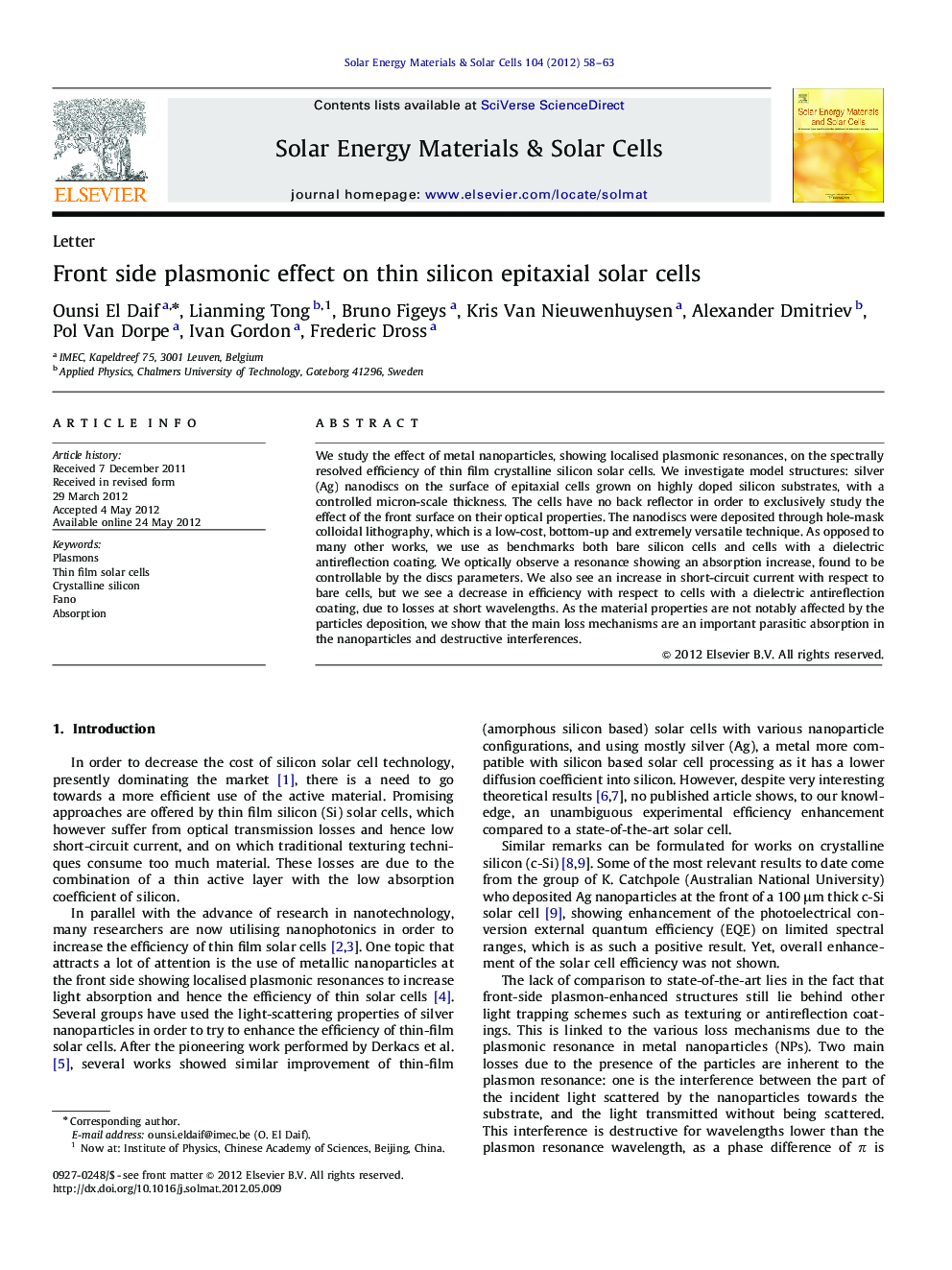| Article ID | Journal | Published Year | Pages | File Type |
|---|---|---|---|---|
| 78460 | Solar Energy Materials and Solar Cells | 2012 | 6 Pages |
We study the effect of metal nanoparticles, showing localised plasmonic resonances, on the spectrally resolved efficiency of thin film crystalline silicon solar cells. We investigate model structures: silver (Ag) nanodiscs on the surface of epitaxial cells grown on highly doped silicon substrates, with a controlled micron-scale thickness. The cells have no back reflector in order to exclusively study the effect of the front surface on their optical properties. The nanodiscs were deposited through hole-mask colloidal lithography, which is a low-cost, bottom-up and extremely versatile technique. As opposed to many other works, we use as benchmarks both bare silicon cells and cells with a dielectric antireflection coating. We optically observe a resonance showing an absorption increase, found to be controllable by the discs parameters. We also see an increase in short-circuit current with respect to bare cells, but we see a decrease in efficiency with respect to cells with a dielectric antireflection coating, due to losses at short wavelengths. As the material properties are not notably affected by the particles deposition, we show that the main loss mechanisms are an important parasitic absorption in the nanoparticles and destructive interferences.
